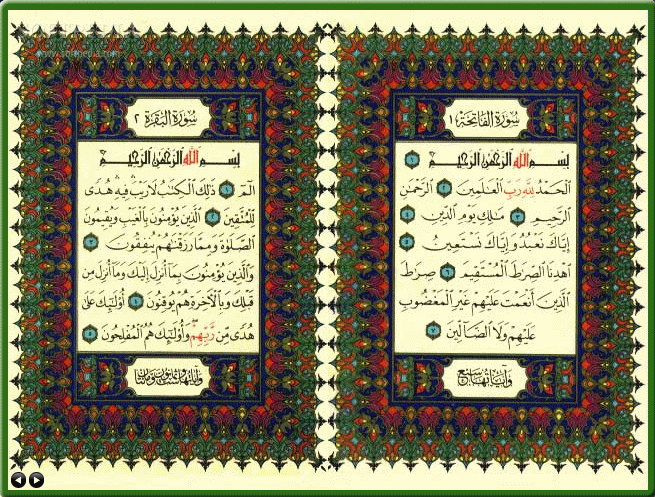The Hidden Origins of Islam: New Research into Its Early History
Some of you may know Dr. Gerd Rüdiger Puin a German authority on Qur'anic historical orthography. Together with Professor Karl-Heinz Ohlig (Religious History), they studied the Sana'a Qur'an (the oldest Qur'anic writings) and this is a culmination of many years of their work. We own a great debt of gratitude to these scientists, through their painstaking and meticulous work (countless hours), we will ultimately answer many of the questions we have about early "Islamic" religion.
Here's the Book Review:
The standard histories of Muhammad and the early development of Islam are based on Islamic literature that dates to the ninth and tenth centuries--some two centuries or more after the death of Muhammad in 632. Islamic literary sources do not exist for the seventh and eighth centuries, when, according to tradition, Muhammad and his immediate followers lived. All that is preserved from this time period are a few commemorative building inscriptions and assorted coins.
Based on the premise that reliable history can only be written on the basis of sources that are contemporary with the events described, the contributors to this in-depth investigation present research that reveals the obscure origins of Islam in a completely new light. As the authors meticulously show, the name "Muhammad" first appears on coins in Syria bearing Christian iconography. In this context the name is used as an honorific meaning "revered" or "praiseworthy" and can only refer to Jesus Christ, as Christianity was the predominant religion of the area at this time. This same reference exists in the building inscription of the Dome of the Rock in Jerusalem, built by the caliph `Abd al-Malik.
The implication of these and other findings here presented is that the early Arab rulers adhered to a sect of Christianity. Indeed, evidence from the Koran, finalized at a much later time, shows that its central theological tenets were influenced by a pre-Nicean, Syrian Christianity. Linguistic analysis also indicates that Aramaic, the common language throughout the Near East for many centuries and the language of Syrian Christianity, significantly influenced the Arabic script and vocabulary used in the Koran. Finally, it was not until the end of the eighth and ninth centuries that Islam formed as a separate religion, and the Koran underwent a period of historical development of at least 200 years.
--
--
If you're interested in learning about early Islam, I think you'll find this book illuminating. Christians must be interested in knowing MHMT (ie: Mohammad) was actually a Title for Christ meaning "revered"! Islam stems from a dispute over the concept of Trinity. Islam is essentially a break away Church. Which fit well with what we know from the time period.
I can't wait for this information, along with Jewish and Christian History, to be taught in all K-12 schools
Some of you may know Dr. Gerd Rüdiger Puin a German authority on Qur'anic historical orthography. Together with Professor Karl-Heinz Ohlig (Religious History), they studied the Sana'a Qur'an (the oldest Qur'anic writings) and this is a culmination of many years of their work. We own a great debt of gratitude to these scientists, through their painstaking and meticulous work (countless hours), we will ultimately answer many of the questions we have about early "Islamic" religion.
Here's the Book Review:
The standard histories of Muhammad and the early development of Islam are based on Islamic literature that dates to the ninth and tenth centuries--some two centuries or more after the death of Muhammad in 632. Islamic literary sources do not exist for the seventh and eighth centuries, when, according to tradition, Muhammad and his immediate followers lived. All that is preserved from this time period are a few commemorative building inscriptions and assorted coins.
Based on the premise that reliable history can only be written on the basis of sources that are contemporary with the events described, the contributors to this in-depth investigation present research that reveals the obscure origins of Islam in a completely new light. As the authors meticulously show, the name "Muhammad" first appears on coins in Syria bearing Christian iconography. In this context the name is used as an honorific meaning "revered" or "praiseworthy" and can only refer to Jesus Christ, as Christianity was the predominant religion of the area at this time. This same reference exists in the building inscription of the Dome of the Rock in Jerusalem, built by the caliph `Abd al-Malik.
The implication of these and other findings here presented is that the early Arab rulers adhered to a sect of Christianity. Indeed, evidence from the Koran, finalized at a much later time, shows that its central theological tenets were influenced by a pre-Nicean, Syrian Christianity. Linguistic analysis also indicates that Aramaic, the common language throughout the Near East for many centuries and the language of Syrian Christianity, significantly influenced the Arabic script and vocabulary used in the Koran. Finally, it was not until the end of the eighth and ninth centuries that Islam formed as a separate religion, and the Koran underwent a period of historical development of at least 200 years.
--
--
If you're interested in learning about early Islam, I think you'll find this book illuminating. Christians must be interested in knowing MHMT (ie: Mohammad) was actually a Title for Christ meaning "revered"! Islam stems from a dispute over the concept of Trinity. Islam is essentially a break away Church. Which fit well with what we know from the time period.
I can't wait for this information, along with Jewish and Christian History, to be taught in all K-12 schools



